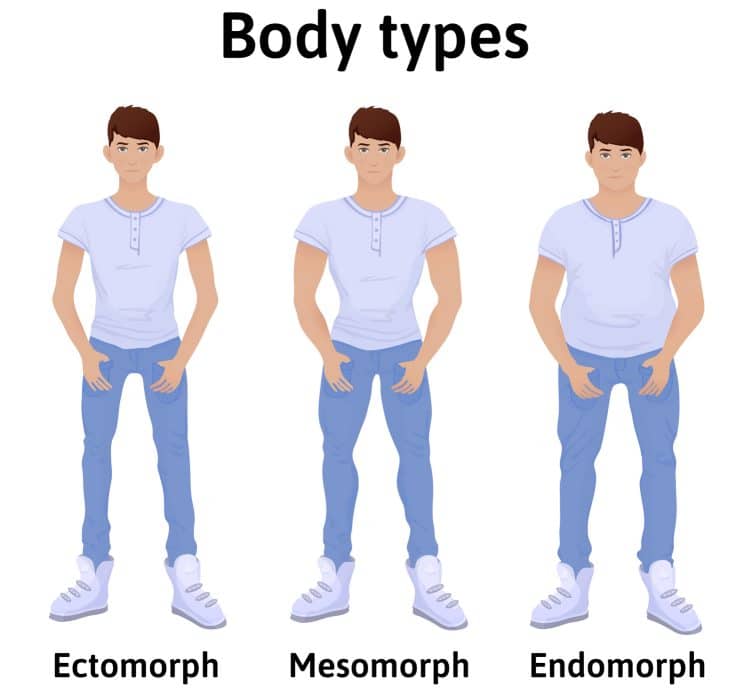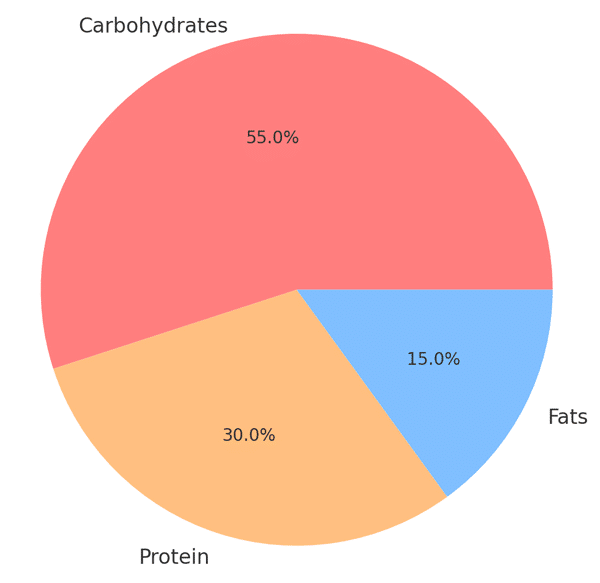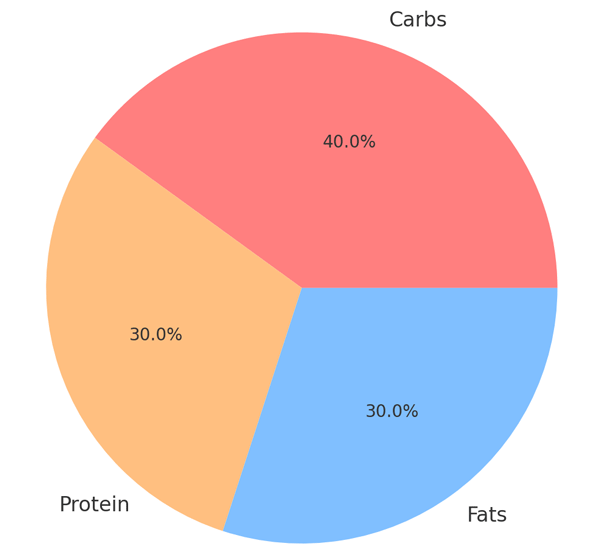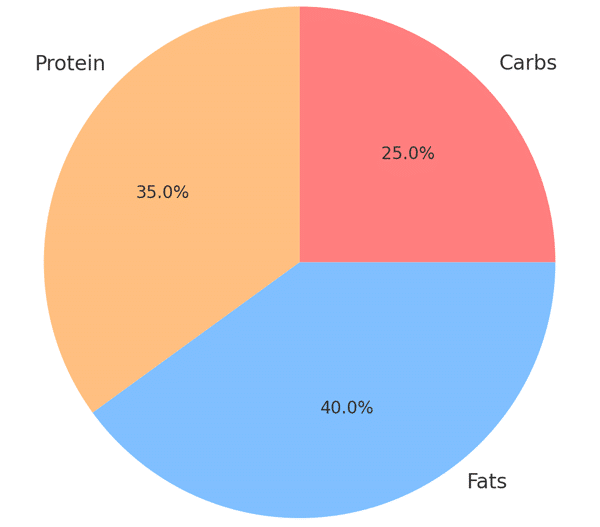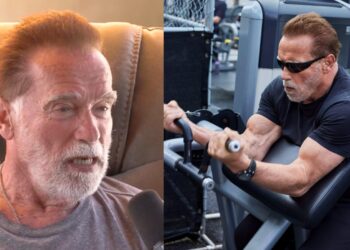If you’re a guy who works out, you probably have an ideal physique in mind, maybe inspired by a fitness influencer or pro bodybuilder. Yet, grasping your unique body type is crucial. If your inherent body type doesn’t match your envisioned physique, achieving that look can be elusive. Recognizing one’s body type isn’t just about aesthetics; it fundamentally influences workout strategies and nutrition.
Drawing on insights from Dr. Steven Griffin, a Physical Therapist with expertise in holistic recovery and wellbeing, and my own background in personal training, we stress the importance of understanding one’s body type. In this article, we’ll delve deep into identifying the three primary male body types: Ectomorphs, Mesomorphs, and Endomorphs. More crucially, we’ll outline how to tailor your training and nutrition to best suit your body type. This holistic approach ensures that your fitness journey is both scientifically grounded and uniquely tailored to you.
The 3 Body Types
The concept of body types is a relatively new phenomenon. Scientifically called somatypes, it is the creation of a 1940s psychologist named William Sheldon. He proposed that every human body, male and female, can be separated into one of three basic classifications, which he called:
- Ectomorphs
- Mesomorphs
- Endomorphs
Pure ectomorphs are tall, skinny, and generally awkward. They have small joints and narrow hips. Pure mesomorphs are strong, muscular, and lean, with an impressive natural shoulder girdle-to-hip ratio. Pure endomorphs have shorter limbs and carry more body weight. They have narrow shoulders and wide hips.
Very few people are a pure somatotype. A rating scale between 1 and 7 for each somatotype produces a three-digit somatotype rating. People with a ‘normal’ body type will have a somatotype of 444.
Level Up Your Fitness: Join our 💪 strong community in Fitness Volt Newsletter. Get daily inspiration, expert-backed workouts, nutrition tips, the latest in strength sports, and the support you need to reach your goals. Subscribe for free!
Men and women have different body shapes and somatotypes. Men have been described as apples, while women as pears. This relates to the tendency of women to store excess body fat on their hips and buttocks while men collect it around the abdomen.
The key thing to appreciate is that your genetics predetermines your body type. So, you cannot go from being an ectomorph to a mesomorph, no matter how hard you work out. But you can maximize your physical development potential within the bounds of your body type.
To understand what that means, let’s consider a famous example of each of the three body types.
Frank Zane: The Ultimate Ectomorph

Frank Zane is a hall-of-fame bodybuilder who is recognized as the inspiration for the ‘Classic Physique’ division. Zane has a typical ectomorph body. With a small bone structure and long limbs, he was never going to be mistaken for a mass monster. In fact, his highest onstage weight was 190 pounds, at a height of 5’9”. Still, he went on to claim three Mr. Olympia titles and was one of only three men ever to beat Arnold Schwarzenegger — who was a classic mesomorph, by the way!
How did he do it? Zane worked with what he had. Rather than focusing on getting bigger and bigger, he developed the most aesthetic, streamlined, and ripped physique of his era.
Ronnie Coleman: A Classic Mesomorph
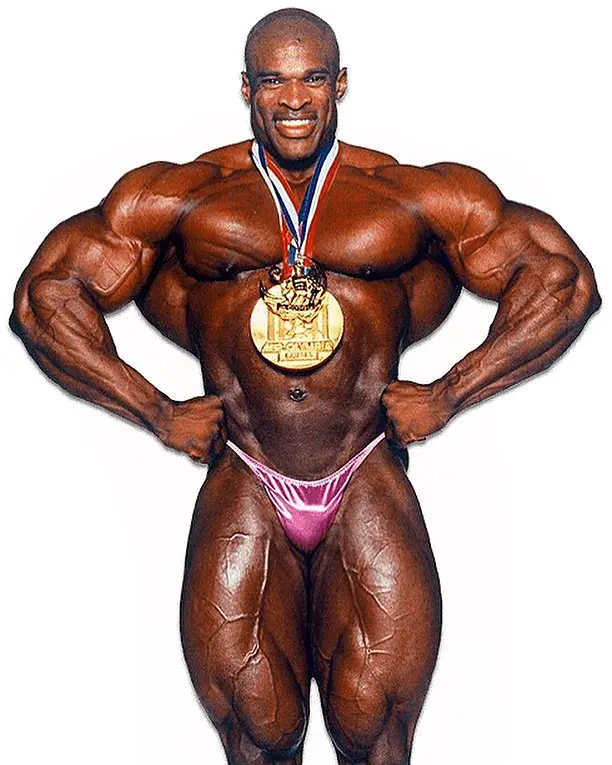
Eight-time Mr. Olympia Ronnie Coleman was built to pack on muscle mass. In fact, when he first walked into the MetroFlex Gym in Arlington, Texas, the gym owner, Brian Dobson, thought Ronnie was already a veteran bodybuilder. However, Ronnie had only been training for a few months in a home gym. Yet, he had broad shoulders, a narrow waist, low body fat levels, and dense muscle, marking him a classic mesomorph.
As a result, he dominated the pro bodybuilding world of the ’90s, claiming eight straight Mr. Olympia victories.
Jay Cutler: A Typical Endomorph

Jay Cutler is remembered as a mass monster — and as the man who put a halt to Coleman’s Olympia reign. Yet, if you look at pictures of Jay in his teens, you’ll see that he has a classic endomorph physique, stocky and broad, lacking the natural shoulder-to-hip differential of a mesomorph. He was also prone to putting on body fat.
Yet Jay learned to work within his body type and, through hard work, grit, and determination, was able to forge the physique that took him to four Olympia titles.
How to Determine Your Body Type
So, how do you work out what body type you have? Even though no person is 100% one body type, your body will fit into one of the three categories more naturally than the other two. Here are the physical characteristics to check for to identify which body type you are:
Ectomorph:
- You have long, lanky muscles
- You struggle to gain weight, including body fat (even when you eat junk food)
- It is easy for you to lose weight
- You have small bones (you can probably put your hand around your opposite wrist)
- You look lean in the mirror but have little to visible muscle mass
- Your chest is flat
- Your shoulders may be bony
Mesomorph:
- Wide shoulders
- Narrow hips
- V-shaped upper body
- Able to gain muscle and lose fat easily
- Naturally strong
Endomorph:
- You are carrying too much body fat, especially around your middle
- You have a big appetite
- It’s hard for you to lose weight
- Very little muscle definition
In addition to the above, here’s a quick multi-choice test to help you determine your body type. Simply answer 1, 2, or 3 to the following:
Question One: When you try on a new pair of jeans, do they feel:
- Snug but not too tight in the butt?
- Loose in the butt?
- Tight in the butt?
Question Two: Clasp your hand around your opposite wrist. Do the middle finger and thumb:
- Barely connect?
- Overlap?
- Not touch?
Question Three: Would you say that you have:
- A V-shaped upper body?
- A lean, beanpole torso?
- A pear-shaped frame?
Question Four: measure your chest with a tape measure. Is it:
- 37-44 inches?
- Less than 37 inches?
- More than 44 inches?
Question Five: Would you say that your metabolism is:
- Fast but you can still build muscle?
- Too fast to build muscle?
- Slow?
Question Six: Do you find it:
- Relatively easy to gain fat-free muscle?
- Hard to gain either fat or muscle?
- Quite easy to gain both muscle and fat?
Question Seven: Would you say that your torso is like a:
- Inverted triangle?
- Rectangle?
- Square?
Question Eight: Is your rib cage:
- Thinner than your wider collarbone?
- Narrower than your collarbone and hips?
- As thick as your collarbone and hips?
Now add up your total score. If your total is 12 or below, you are a mesomorph. If it’s between 13 and 19, you are an ectomorph. A score of 20 or above puts you in the endomorph category.
Body Type & Personality
When William Sheldon propounded his body type theory in the 1940s, he added a controversial aspect that has been lost along the way. Sheldon connected the three different body types with distinct personalities. In his 1954 book Atlas of Men, he wrote about these personality traits, stating:
- Ectomorphs are quiet, shy, introverted, and reserved. They tend toward artistic pursuits.
- Endomorphs tend to be relaxed, sociable, fun-loving, and peaceful.
- Mesomorphs are assertive, aggressive, domineering, and competitive. [1]
Sheldon’s correlations between body type and personality type have since been discredited. However, it has been shown that general stereotypes exist in society that aligns with his writings. As a result, overweight people (endomorphs) are seen by others as more genial, fun-loving, and warm than skinny (ectomorphic) or muscular (mesomorphic) people. Likewise, muscular people were seen as more in control and dominant than overweight or skinny people.
In 1961 a couple of researchers named Wells and Siegel set out to show that Sheldon’s theory about body type personalities was more to do with people’s perceptions than reality. They showed four silhouette drawings (the three somatotypes and an ‘average’ male physique) to 120 people and asked them to rate each body type over 24 traits, including such things as lazy, energetic, intelligent, and talkative.
The study’s results were very much in line with Sheldon’s trait associations. However, they were not backed up by actual experience. People were just as likely to be lazy or energetic regardless of their body type. This showed that the theory was based on stereotypes rather than real-life observations. [2]
The bottom line is that your body type has nothing to do with your personality type.
Training For Your Body Type
Having identified your body type, you can now tailor your workouts to suit your body. Let’s break down the key considerations for each type:
Training For Ectomorphs
If you are an ectomorph, you must maximize every minute on the gym floor. That’s because you do not have energy, or calories, to waste. Therefore, you should skip the cardio section and head directly to the power racks. Focus on the big compound exercises that have been proven to deliver the best band for your buck. Here are six basic mass-building exercises that you should include:
- Squat
- Deadlift
- Pull-Up
- Bench Press
- Military Press
- Bent Over Row
Keep your rep range between 6-12 reps. Pyramid your sets so that you increase the weight and lower the reps on each set. Here’s an example of what this might look like on squats:
- Set One: 12 reps (135 pounds)
- Set Two: 10 reps (155 pounds)
- Set Three: 8 reps (160 pounds)
- Set Four: 6 reps (165 pounds)
Perform four sets of each exercise with a decent amount of rest between sets (90-120 seconds). This will allow you to put in maximum effort.
Your basic mindset as an ectomorph should be to get in, work like hell, and then get out. In other words, your workouts need to be short and intense.
If you are a beginner trainer, start with full-body training for the first six months. Choose one exercise per body part and do four sets of reps, done in pyramid style. Here’s a sample workout for an ectomorphic beginner:
- Squats: 4 x 12/10/8/6
- Lunges: 4 x 12/10/8/6
- Dumbbell Bench Press: 4 x 12/10/8/6
- Bent Over Row: 4 x 12/10/8/6
- Military Press: 4 x 12/10/8/6
- Alternate Dumbbell Curl: 4 x 12/10/8/6
- Lying Triceps Extension: 4 x 12/10/8/6
- Calf Raises: 4 x 12/10/8/6
After six months, you can transition to an upper body – lower body split.
Related: Ectomorph Workout: The Skinny Guy’s Training Guide
Training For Mesomorphs
As a mesomorph, you must establish a good balance between fat-stripping cardio and mass-building weight training. Your cardio workouts should involve both steady-state and high-intensity interval training. Do two sessions of each per week.
Steady-state cardio can be done on a rowing machine, elliptical, or treadmill for 20-30 minutes. When it comes to HIIT training, stationary biking, running on a treadmill, and rowing are really effective options. After a warm-up, perform eight twenty-minute sprints with ten-second rest periods between them.
While you can do your steady-state cardio before your weight training sessions, I recommend doing your HIIT training on your weight training off days. That’s because these sessions are very intense and may impact your muscle-building workouts if done on the same day.
As a mesomorph, your body is naturally better suited to resistance training than an ectomorph or an endomorph. That’s why, as a beginner, you can jump directly into a split routine program. As a personal trainer, I often use a three-day on, one-day off program with beginner mesomorphs. A combination of compound and isolation exercises works best for mesomorphs.
Mesomorph workouts should be around an hour long and consist of 15-20 sets. Your rep range should be a little wider than for an ectomorph workout, going as high as 20 reps and as low as five reps. Here is an effective three-way split workout I use with my personal training clients:
Day One: Chest / Triceps
- Dumbbell Bench Press: 4 x 20/12/10/8
- Incline Fly: 3 x 12
- Dips: 3 x 12
- Lying Triceps Extension: 4 x 20/12/10/8
- Triceps Pressdown: 4 x 20/12/10/8
Day Two: Legs / Shoulders
- Squat: 4 x 20/12/10/8
- Lunge: 3 x 12
- Leg Extension: 3 x 12
- Glutes Kickback: 3 x 12
- Dumbbell Shoulder Press: 4 x 20/12/10/8
- Cable Side Lateral Raise: 3 x 12
Day Three: Back / Biceps
- Pull-Up: 3 x 8-12
- Bent-Over Row: 4 x 20/12/10/8
- Seated Cable Row: 3 x 12
- Barbell Curl: 4 x 20/12/10/8
- Close-Grip Pull-Up: 3 x 8-12
Related: Mesomorph Workout & Diet Program
Training For Endomorphs
Level Up Your Fitness: Join our 💪 strong community in Fitness Volt Newsletter. Get daily inspiration, expert-backed workouts, nutrition tips, the latest in strength sports, and the support you need to reach your goals. Subscribe for free!
When it comes to strength training, an endomorph workout will look pretty similar to that of an ectomorph. The emphasis will be on compound exercises that maximally stimulate the working muscles and allow you to lift the heaviest weight. The difference is that, whereas the ectomorph needs to minimize their calorie burn, the endomorph needs to do the opposite. As a result, endomorph workouts should be significantly longer and involve a wider rep range.
The big difference between ectomorph and endomorph workouts comes down to cardio. As an endomorph, you must burn off the excess calories stored as body fat on your frame. To do that, you should perform cardio workouts 4-5 times per week.
The most effective form of fat-burning cardio is high-intensity interval training, which was mentioned in regard to mesomorph cardio. One of the great things about this form of cardio is that, while it burns a decent amount of calories during the workout, that calorie burn continues in the hours after you leave the gym. That’s due to what is known as the after-burn effect, by which extra oxygen is needed by the body to fuel the cells after the workout. [3]
A new endomorphic trainer should follow a full body routine for the first six months. Here is a sample beginner workout for endomorphs:
- Squat: 5 x 20/15/ 12/10/8
- Lunge: 4 x 12/10/8/6
- Leg Extension: 4 x 12/10/8/6
- Dumbbell Bench Press: 5 x 20/15/ 12/10/8
- Bent Over Row: 4 x 12/10/8/6
- Military Press: 4 x 12/10/8/6
- Side Lateral Raise: 3 x 12
- Alternate Dumbbell Curl: 5 x 20/15/ 12/10/8
- Lying Tricep Extension: 5 x 20/15/ 12/10/8
- Cable Crunch: 4 x 30/25/20/15
- Standing Calf Raise: 4 x 12/10/8/6
Related: Endomorph Workout and Diet Program
Nutrition For Different Body Types
Making adjustments to the way you eat is just as important as your differentiated training based on body type. In fact, having trained many people of every body type over the past thirty-five years, I’d go as far as to say that eating for your body type is even more important than how you train. Unless you tailor your diet to your somatotype, you will never get close to your potential.
Nutrition for Ectomorphs
As an ectomorph, your number one nutritional goal should be to end each day in a caloric surplus. That means you have supplied all the calorie energy your body needs to carry out its functions and have extra calories left over to build new muscle tissue. Of course, those extra calories need to be the kind that will promote muscle gain — protein and complex carbohydrates.
To get into the caloric surplus, you need to eat more food. That can be challenging and, at times, uncomfortable. At the start, you will probably feel bloated. But your body will soon adapt, and you’ll start to feel more comfortable.
Before you can consume more calories than your body needs each day, you first need to know what that maintenance number is. Here’s an online calorie calculator that will help you work it out.
Having established what your daily caloric maintenance level is, you should increase it by 500 calories. Let’s say that your maintenance level is 2,400 calories. To be in a position to gain muscle, you need to increase that number to 2,900 calories per day.
Now, let’s talk about what those calories should consist of. The ideal macronutrient muscle-building ratio is:
- Carbohydrates: 55%
- Protein: 30%
- Fats: 15%
Having established what your calorie and macro goals are, you now need to stick to them. That means tracking your intake. Not tracking food consumption is the biggest mistake that ectomorphs make. Simply put, this is too important to be left to chance.
The most convenient way to track your calorie and macronutrient intake is by using a food-tracking app. Here are three popular apps that I recommend:
I recommend discovering the foods that you really like, and that also fit with your macros and then using them as your mainstay. Too often, people try to vary their food choices too much that it becomes too complicated. The key to success is to make it as easy as possible by eating pretty much the same foods day in and day out. That might seem boring, but remember that your goal here is to build muscle, not entice your taste buds.
Tip: Calculate your recommend daily protein, carbs and fat intake.
4 Nutrition Tips for Ectomorphs
Here are four nutrition tips to help ectomorphs build muscle:
Drink Your Calories
A helpful tip that I give to my ectomorphic bodybuilding clients is to drink a decent portion of their calories each day. It is easier to drink calories than it is to eat them. It is also more convenient to whip up a protein shake than to cook a chicken breast. Even better than a protein shake for you as an ectomorph is a weight gainer shake. A weight gainer will have a higher carbohydrate and total calorie count than a protein shake. You can use it as a complete meal replacement or post-workout shake.
Here’s what you should throw into your blender to make your weight gain shake:
- Milk
- Oats
- Whey protein
- Peanut butter
- Frozen fruit
Eat Every Three Hours
You must eat every three hours. So, if your first meal is at 7 am, you should eat again at 10 am, 1 pm, 4 pm, and 7 pm. You can have the same number of calories in each meal (by dividing your caloric goal by 5) or have three larger meals and two smaller ones. I recommend trying both to see which works best for you.
Reduce Other Energy Expenditure
Apart from your gym workouts, you should do as little as possible to burn calories. That means no basketball on the weekends and no runs in the woods. Having worked to consume those extra calories, you need to preserve them for building muscle.
Have A Post-Workout Shake
After the workout; your body needs protein and carbs. To get them, have a 3:1 carb-to-protein ratio post-workout shake within an hour of your workout. Check on the product label for branch chain amino acids (BCAAs), glutamine, creatine, fast-acting carbs, and whey isolate protein.
10 Great Food Choices for Ectomorphs
Here’s a sampling of excellent food choices to help ectomorphs meet their nutrition goals:
Carbohydrates:
- Brown rice
- Sweet potatoes
- Yams
- Brown pasta
- Whole meal bread
Protein:
- Fish
- Eggs
- Protein powder
- Eggs
- Chicken breast
Fats:
- Walnuts
- Almonds
- Avocados
- Eggs
- Coconut oil
Nutrition for Mesomorphs
As a mesomorph, you have a muscle-building advantage. But that won’t mean anything unless you can maintain a caloric surplus. Those extra calories beyond what you need to function are required for protein synthesis. That means that, just like the ectomorph, you need to know your maintenance calorie level. Use this online calorie calculator to find out what that number is.
As a mesomorph, you don’t have to be as aggressive as an ectomorph in terms of your caloric surplus. I recommend that you aim for a 250-calorie surplus. So, if your maintenance level is 2,400 calories, you should aim to consume 2,650 calories per day.
You should separate those calories over 5-6 meals per day, spaced three hours apart. Here’s a suggested macronutrient breakdown:
- Carbs: 40%
- Protein: 30%
- Fats: 30%
You’ll notice that the carbs are down while the protein is up compared to the ectomorph macros. That’s because, as a mesomorph, you are more likely to gain fat weight if you let your crabs and fats get too loose. Mesomorphs also tend to get better results with a slightly higher protein intake. Aim to take in one gram of protein per pound of body weight.
Your post-workout shake should have fewer carbs in it than the shake of an ectomorph. I recommend looking for a brand that has a 2:1 carb-to-protein ratio. It should also contain glutamine, BCAAs, and creatine.
As a mesomorph, you will benefit from the same protein, carb, and fat food choices as an ectomorph.
Nutrition for Endomorphs
As an endomorph, you have the challenging task of losing body fat and putting on muscle simultaneously. To do this, you must be very strict about what you eat. Like ectomorphs and mesomorphs, you must create a caloric surplus to provide the fuel to build muscle tissue. But you need to ensure that all those calories are clean, with limited carbs and as little sugar and unhealthy fats as possible.
Once again, you need to establish your daily caloric maintenance level. Go here to find it. Now add 200 calories to that number. So, if your maintenance level is 2,400 calories, set your daily intake at 2,600 calories.
Ectomorphs tend to have a higher level of insulin sensitivity than ectomorphs or mesomorphs. As a result, they have a slower rate of fat oxidation due to more insulin having to be released to transport glucose. You should, therefore, carefully regulate your carbohydrate intake. As far as possible, stay away from simple carbs. Refined grains should also be on your no-go list. The carbs you should consume are fruits, green leafy vegetables, and whole grains.
While you should obviously stay clear of unhealthy fats, your healthy fat intake should increase. Healthy fats will keep you full, helping prevent cravings and cleansing your digestive system. I recommend the following macro breakdown:
- Carbs: 25%
- Protein: 35%
- Fats: 40%
Here are half a dozen smart, healthy fat choices for endomorphs:
- Avocado
- Almonds
- Seeds
- Fatty Fish
- Dark chocolate
- Full-fat yogurt
Body Type Training & Nutrition Summary
| Subject | Ectomorph | Mesomorph | Endomorph |
| Weight Training | Low-Volume | Moderate-Volume | High-Volume |
| High-Intensity | Moderate-Intensity | Low-Intensity | |
| 5-8 reps per set | 8-12 reps per set | 10-15 reps per set | |
| Total Weekly Training | 4 hours | 5-6 hours | 7-8 hours |
| Weekly Split | 2 days on/1 day off | 3 days on/1 day off | 2 days on/ 1 day off |
| Rest Between Sets | 90-120 seconds | 60-90 seconds | 30-60 seconds |
| Cardio Split | No cardio | 30-60 minutes | 60 minutes |
| 3 times per week | 4-5 times per week | ||
| Diet | Carbs: 55% | Carbs: 40% | Carbs: 25% |
| Protein: 25% | Protein: 30% | Protein: 35% | |
| Fats: 20% | Fats: 30% | Fats: 40% |
Read also: Female Body Types and Shapes
Wrap Up
If you’re not training and eating according to your body type, then you are operating in the dark. In this article, we’ve outlined how to identify which of the three body types you fit into and what that should mean for your training and nutrition plan. We’ve also learned that while you can’t change your body type, you can maximize its potential to build an awesome physique. If you’re an ectomorph, you’ll never be mistaken for Ronnie Coleman in his prime. But you do have the potential to be your version of Frank Zane — and that’s pretty impressive!
References
- Sheldon, W. A. (1954). Atlas of men, a guide for somatotyping the adult male at all ages. Harper.
- Wells, W. D., & Siegel, B. (1961). Stereotyped somatotypes. Psychological Reports, 8, 77–78. https://doi.org/10.2466/pr0.1961.8.1.77
- Ito S. High-intensity interval training for health benefits and care of cardiac diseases – The key to an efficient exercise protocol. World J Cardiol. 2019 Jul 26;11(7):171-188. doi: 10.4330/wjc.v11.i7.171. PMID: 31565193; PMCID: PMC6763680.

